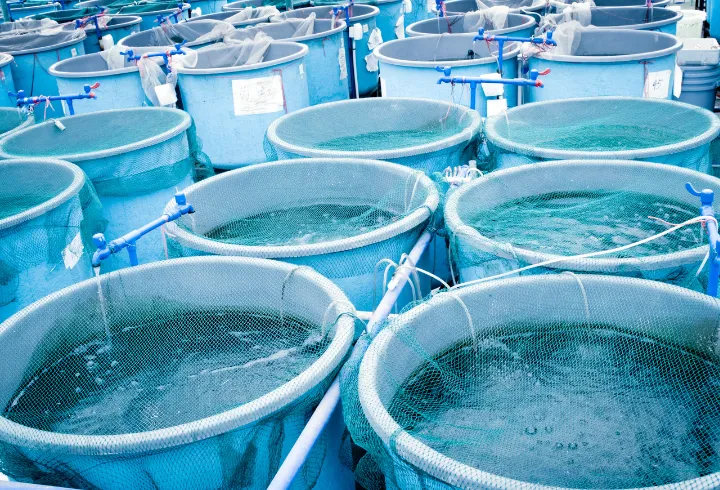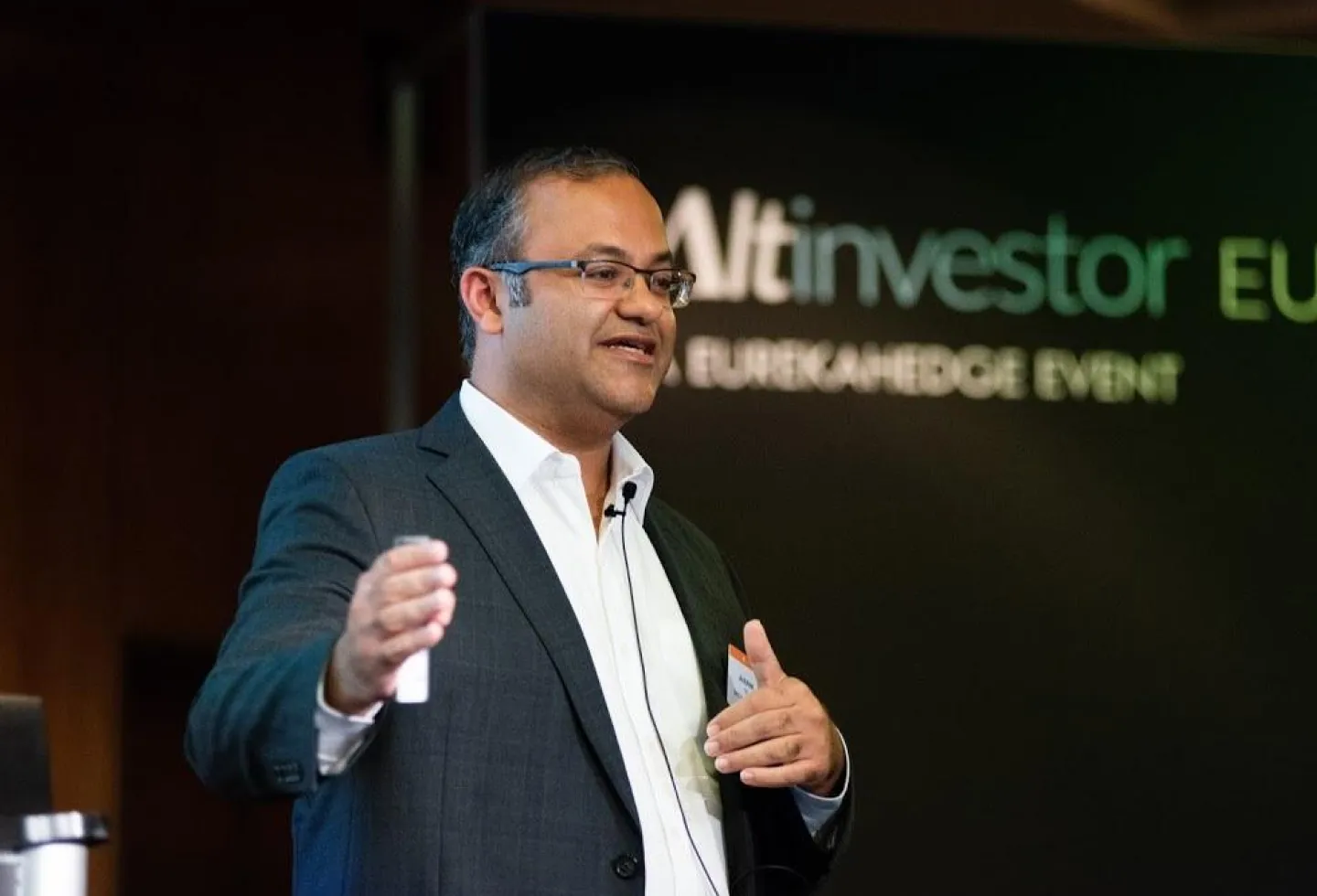As the world’s population continues to grow, so does the demand for seafood. Aquaculture, or fish farming, now provides over 50% of global seafood consumption.
Sustainable aquaculture aims to address the issues in conventional aquaculture by taking a holistic approach that balances environmental health, economic viability, and social responsibility.
The goal is to produce healthy seafood, support coastal communities, and maintain productive ecosystems for future generations.
The stakes are high, considering over 90% of global fisheries are fully exploited or overfished. Sustainable aquaculture will play a pivotal role in meeting protein needs while restoring ocean health.
The good news is that with innovative solutions, aquaculture can thrive in harmony with marine environments.
This article will explore the key principles and practices that define sustainable aquaculture models.
Sustainable Aquaculture
Sustainable aquaculture refers to the farming of aquatic organisms like fish, crustaceans, and aquatic plants in a way that is environmentally sound, socially responsible, and economically viable over the long term.
Definition and key principles
Sustainable aquaculture is based on several key principles:
- Protecting the health of aquatic ecosystems by using farming methods that minimize pollution, habitat damage, and escapes. This includes proper management of fish waste, excess nutrients, and chemicals.
- Using resources efficiently by optimizing feed conversion ratios, limiting water usage, and pursuing circular production systems. This reduces the carbon and resource footprint.
- Maintaining biosecurity and high standards of animal welfare from hatching through harvest. This supports the health, safety, and ethical treatment of farmed species.
- Fostering social responsibility through community engagement, fair labor practices, and positive economic impacts for workers and local economies.
- Ensuring long-term economic viability through proper business planning, technology adoption, and access to training and financing. This enables sustained and equitable profits.
Importance for the future of food production
With wild fisheries stressed close to their limit, aquaculture will need to supply the growing global demand for seafood.
Sustainable methods are essential for this expansion to avoid exacerbating environmental issues like climate change, pollution, and biodiversity loss.
Sustainable aquaculture also presents opportunities like supplemental income in developing areas, sustainable “blue food” production, and innovative integration with agriculture.
Overall, embracing sustainability is critical for aquaculture to fulfill its potential as a healthy, ethical, and low-footprint source of protein for the world’s growing population.
Environmental Practices
Aquaculture operations can have significant environmental impacts if not properly managed. Adopting sustainable practices is key for the industry’s future.
This involves careful use of natural resources and minimizing the operation’s footprint.
Water Usage and Discharge Management
Aquaculture is a water-intensive industry. Facilities must use water responsibly by recycling and reusing it wherever possible.
Water discharges should be properly treated to remove contaminants before release. Usage and discharge volumes should be monitored and benchmarked to drive continuous improvement.
Technologies like recirculating aquaculture systems can dramatically reduce water needs.
Waste Reduction and Circular Systems
Aquaculture generates organic wastes like uneaten feed, feces, and dead fish.
Facilities should have clear waste management plans to recover, recycle, or responsibly dispose of these materials.
Wastes can be repurposed as fertilizers, biogas production, or aquafeeds. The aim is to develop circular production systems with zero waste.
Sustainable Feeds
Aquaculture feeds traditionally rely on fishmeal and fish oil from wild fisheries.
Expanding the industry requires alternative feed ingredients that are sustainably sourced.
Options include agricultural by-products, algae oils, insects, and single-cell proteins. Formulations should provide optimal nutrition while minimizing environmental impact.
Biosecurity Protocols
Diseases can decimate aquaculture systems and pose risks if transferred to wild populations.
Robust biosecurity measures are vital, like quarantining new stocks, disinfecting equipment, and limiting outsider access.
Vaccines, probiotics, and genetics can boost system resilience. Rapid diagnostics and coordinated emergency response plans also help safeguard operations.
Economic and Social Sustainability
For the aquaculture industry to truly be sustainable, it must be economically viable and benefit local communities.
Some key elements of sustainable aquaculture from an economic and social perspective include:
Community Engagement
- Aquaculture farms should engage with and listen to local community concerns. This builds trust and goodwill.
- Farms can provide employment, education programs, and other benefits to the local population.
- Community-supported aquaculture models, where the community invests in a farm, are also gaining traction.
Certifications and Regulations
- Third-party sustainability certifications like ASC, BAP, and Global GAP demonstrate environmental and social responsibility.
- Complying with regulations on water usage, effluents, etc. is important for getting the license to operate.
- Standards and regulations are evolving to support more sustainable practices.
Technology for Efficiency and Profitability
- Improved production systems, IoT sensors, automation, and AI can optimize feeding, monitoring, and processing.
- Selective breeding and genetic improvements lead to faster growth rates and disease resistance.
- Technology investments can improve efficiency, productivity, and profits.
Job Creation
- Aquaculture is a labor-intensive industry, especially in processing and packaging. It creates employment opportunities.
- Farms provide both unskilled and skilled technical jobs in rural communities with limited alternatives.
- More profitability and growth in the sector will lead to more job creation.
With positive community relations, profitable production, and fair labor practices, the aquaculture industry can sustainably deliver economic and social benefits.
Innovations and Future Opportunities
Sustainable aquaculture is an evolving field, with new technologies and techniques continuously being developed to improve environmental, economic, and social outcomes.
Some key innovations and future opportunities include:
Integrated Multi-Trophic Aquaculture
IMTA systems co-locate fed aquaculture (e.g. fish, shrimp) with extractive aquaculture (e.g. shellfish) to create balanced systems.
The extractive species filter nutrients, leading to cleaner water. IMTA creates economic diversity and improves ecosystem health. Uptake has been steady and is expected to rise.
Aquaponics
Combining hydroponic plant production and recirculating aquaculture, aquaponics is soilless agriculture.
The plants act as biofilters, absorbing fish waste from water before it is recycled back. Very water-efficient and productive, commercial aquaponic systems are increasing, especially in arid regions like the UAE.
Selective Breeding
Genetic improvements to emphasize growth, disease resistance, survival, and other traits can reduce environmental impacts through improved FCR.
Research in this area is accelerating, using advanced genomic tools to identify desirable variants.
Robotics & Automation
Aquaculture operations are increasingly applying innovations in robotic feeding, water monitoring, and autonomous surveillance to increase efficiency.
Machine vision for growth tracking and blockchain for supply chain transparency also hold promise. Automation will confer economic and labor force benefits.
Other cutting-edge areas such as offshore aquaculture, algae bioreactors, and integrated data platforms are also gaining interest and investment.
The sustainable aquaculture landscape 5-10 years from now could look quite different than it does today.
Continued innovation will be key for the industry to expand while safeguarding environmental and social well-being.
Latest Industry Trends in Aquaculture Industry
The aquaculture industry has been paying increasing attention to sustainability in recent years. Key trends include:
Growth in certifications
More aquaculture operations are seeking third-party sustainability certifications such as ASC, GlobalGAP, and BAP. These help assure retailers and consumers.
Technological innovations
New technologies are enabling improved monitoring, feeding efficiency, and waste reduction. For example, video monitoring, automated feeders with sensors, and anaerobic digesters to convert waste into energy.
Integrated Multi-Trophic Aquaculture (IMTA)
IMTA systems co-locate fed species like fish with extractive species like shellfish and seaweed. This allows one species’ waste to be recycled as another species’ food.
Recirculating Aquaculture Systems (RAS)
RAS filters and recycles water, enabling inland/urban farming and reducing water use and discharge impacts.
Alternative feeds
Includes plant-based ingredients, insects, and single-cell proteins to reduce reliance on wild fish as a feed source.
Research and Technology Updates
There are major research initiatives and technology developments aimed at improving sustainability:
- Researchers in Norway have developed sensor-equipped robot boats that can identify disease outbreaks via computer vision. This improves biosecurity.
- USDA has invested in RAS innovations to reduce freshwater usage. Target reductions are over 90% reuse.
- Startups like Ÿnsect and AgriProtein focus on commercial-scale production of insect protein for aquafeeds. This reduces overfishing.
Conclusion
Sustainable aquaculture practices are essential for the future viability and growth of the aquaculture industry.
As this article has covered, many important environmental, economic, and social factors must be addressed to develop truly sustainable aquaculture systems.
Key points that have been covered include:
- Implementing water usage and discharge management protocols to reduce environmental impacts
- Developing circular production systems that reuse waste and byproducts
- Ensuring biosecurity measures are in place to maintain fish health
- Engaging local communities and being sensitive to impacts
- Gaining internationally recognized sustainability certifications
- Leveraging technology and innovation for increased efficiency
- Exploring integrated multi-trophic aquaculture and aquaponics
There are still challenges, but a bright future lies ahead for sustainable aquaculture. Many innovative technologies and production methods provide promise.
As consumers and industry participants, we all have a role to play in supporting and demanding sustainability best practices.
This includes being willing to pay premium prices for certified sustainable seafood.
Policy-makers also need to provide appropriate regulations and incentives to enable the industry to transform.
By working together and integrating sustainability into every step of production, the aquaculture industry can lead the way toward a blue economy that provides long-term social, environmental, and economic benefits for all.



